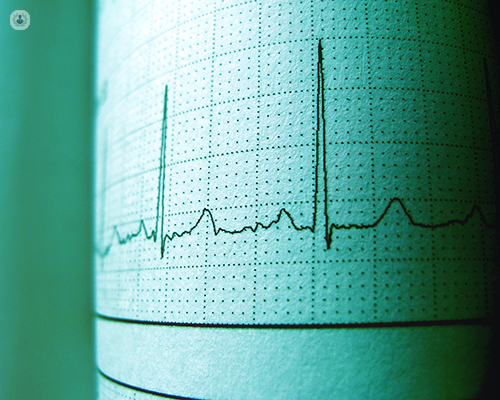What is atrial fibrillation ablation, and who is it recommended for?
Written in association with:Read this article below as one of our leading consultant cardiologists, Professor Mark O'Neill explains what atrial fibrillation ablation is.

What is atrial fibrillation ablation, and who is it recommended for?
Atrial fibrillation (AFib) ablation is a minimally invasive procedure used to treat atrial fibrillation, a common heart rhythm disorder characterised by irregular and rapid heartbeats originating in the upper chambers of the heart (atria). AFib ablation is typically recommended for individuals with symptomatic AFib that is not effectively controlled with medications or other treatments.
What happens during atrial fibrillation ablation?
During AFib ablation, a catheter-based approach is used to deliver energy to specific areas of the heart in order to disrupt abnormal electrical pathways responsible for initiating and sustaining AFib. The procedure is performed by a cardiac electrophysiologist, a specialised cardiologist with expertise in heart rhythm disorders.
Are there different types of atrial fibrillation ablation techniques?
There are several types of AFib ablation procedures, including pulmonary vein isolation (PVI), which targets the pulmonary veins that carry oxygen-rich blood from the lungs to the heart. In individuals with AFib, abnormal electrical signals originating from the pulmonary veins can trigger and perpetuate AFib episodes. By creating scar tissue around the pulmonary vein openings, PVI aims to block these abnormal signals and restore normal heart rhythm.
In addition to PVI, other ablation techniques may be employed to target additional areas of the heart that contribute to AFib, such as the left atrial appendage, the roof of the left atrium, or areas of scar tissue (fibrosis) identified on imaging studies.
What are the associated risks?
While AFib ablation can be highly effective in restoring normal heart rhythm and reducing AFib symptoms, it is not without risks. Potential complications of AFib ablation may include bleeding, blood vessel injury, infection, stroke, heart rhythm disturbances, and damage to surrounding structures in the heart.
What is recovery from AFib ablation like?
Following AFib ablation, patients may experience some discomfort at the catheter insertion sites in the groin, as well as fatigue and mild chest discomfort. Most patients are able to resume normal activities within a few days to weeks after the procedure, although strenuous exercise and heavy lifting should be avoided for two weeks.


